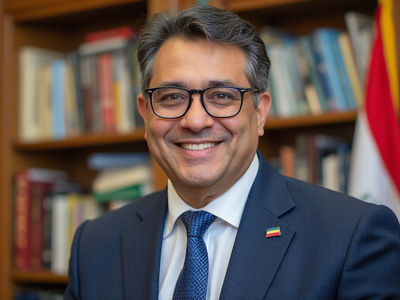Significant Reduction in Political Debt Approved for Upcoming Elections in Costa Rica
The Supreme Electoral Tribunal announces a decrease in state financing for political campaigns following legislative changes.
The Tribunal Supremo de Elecciones (TSE) of Costa Rica is implementing a substantial reduction in political debt which is set to fund political campaigns for the national elections in 2026 and municipal elections in 2028. This adjustment comes as a result of a law recently passed by lawmakers.
The state financing for political campaigns will decrease from an amount equivalent to 0.19% of the Gross Domestic Product (GDP) to 0.11%.
Consequently, the total funding for both electoral processes will drop from approximately ¢93 billion to about ¢54 billion.
For the upcoming national elections in 2026, political parties will have access to slightly over ¢39 billion.
This reduction was stipulated by deputies through a transitional regulation, which was also endorsed by the President of the Republic, Rodrigo Chaves.
The legislative initiative for this decision was spearheaded by Deputy Jonathan Acuña from the Frente Amplio party, who originally proposed a more significant cut to 0.085%, which would have allocated ¢41.685 billion for political campaigns.
After extensive negotiations among legislative factions, the final compromise established the total funding for both elections at 0.11% of GDP.
Andrei Cambronero, spokesperson for the TSE, indicated that the Tribunal consented to the adjustment.
The electoral body itself had suggested a constitutional reform in March 2023 aimed at permanently reducing the political debt to 0.11% of GDP.
Since 1997, the Costa Rican Constitution mandates that the state allocate 0.19% for electoral campaigns, with the authority for modifying this percentage resting with the legislature.
The amendment has resulted in varying amounts being invested in different electoral contests, contingent upon the decisions made by Congress.
For instance, the state allocated 0.19% for the elections in 1998 and 2006, while only 0.10% was designated for the 2002 elections.
The Assembly previously reduced the financing to 0.11% through transitional laws for elections in 2010, 2014, and 2018. The most recent election, held in 2022, saw an even lower allocation of 0.085% of GDP, a response to the economic conditions exacerbated by the pandemic.
Cambronero also noted that from 1956 to 1997, the method for calculating the political debt was different, with the stipulation that it could not exceed 2% of the average public budgets from the three years preceding the election.
The state financing for political campaigns will decrease from an amount equivalent to 0.19% of the Gross Domestic Product (GDP) to 0.11%.
Consequently, the total funding for both electoral processes will drop from approximately ¢93 billion to about ¢54 billion.
For the upcoming national elections in 2026, political parties will have access to slightly over ¢39 billion.
This reduction was stipulated by deputies through a transitional regulation, which was also endorsed by the President of the Republic, Rodrigo Chaves.
The legislative initiative for this decision was spearheaded by Deputy Jonathan Acuña from the Frente Amplio party, who originally proposed a more significant cut to 0.085%, which would have allocated ¢41.685 billion for political campaigns.
After extensive negotiations among legislative factions, the final compromise established the total funding for both elections at 0.11% of GDP.
Andrei Cambronero, spokesperson for the TSE, indicated that the Tribunal consented to the adjustment.
The electoral body itself had suggested a constitutional reform in March 2023 aimed at permanently reducing the political debt to 0.11% of GDP.
Since 1997, the Costa Rican Constitution mandates that the state allocate 0.19% for electoral campaigns, with the authority for modifying this percentage resting with the legislature.
The amendment has resulted in varying amounts being invested in different electoral contests, contingent upon the decisions made by Congress.
For instance, the state allocated 0.19% for the elections in 1998 and 2006, while only 0.10% was designated for the 2002 elections.
The Assembly previously reduced the financing to 0.11% through transitional laws for elections in 2010, 2014, and 2018. The most recent election, held in 2022, saw an even lower allocation of 0.085% of GDP, a response to the economic conditions exacerbated by the pandemic.
Cambronero also noted that from 1956 to 1997, the method for calculating the political debt was different, with the stipulation that it could not exceed 2% of the average public budgets from the three years preceding the election.











